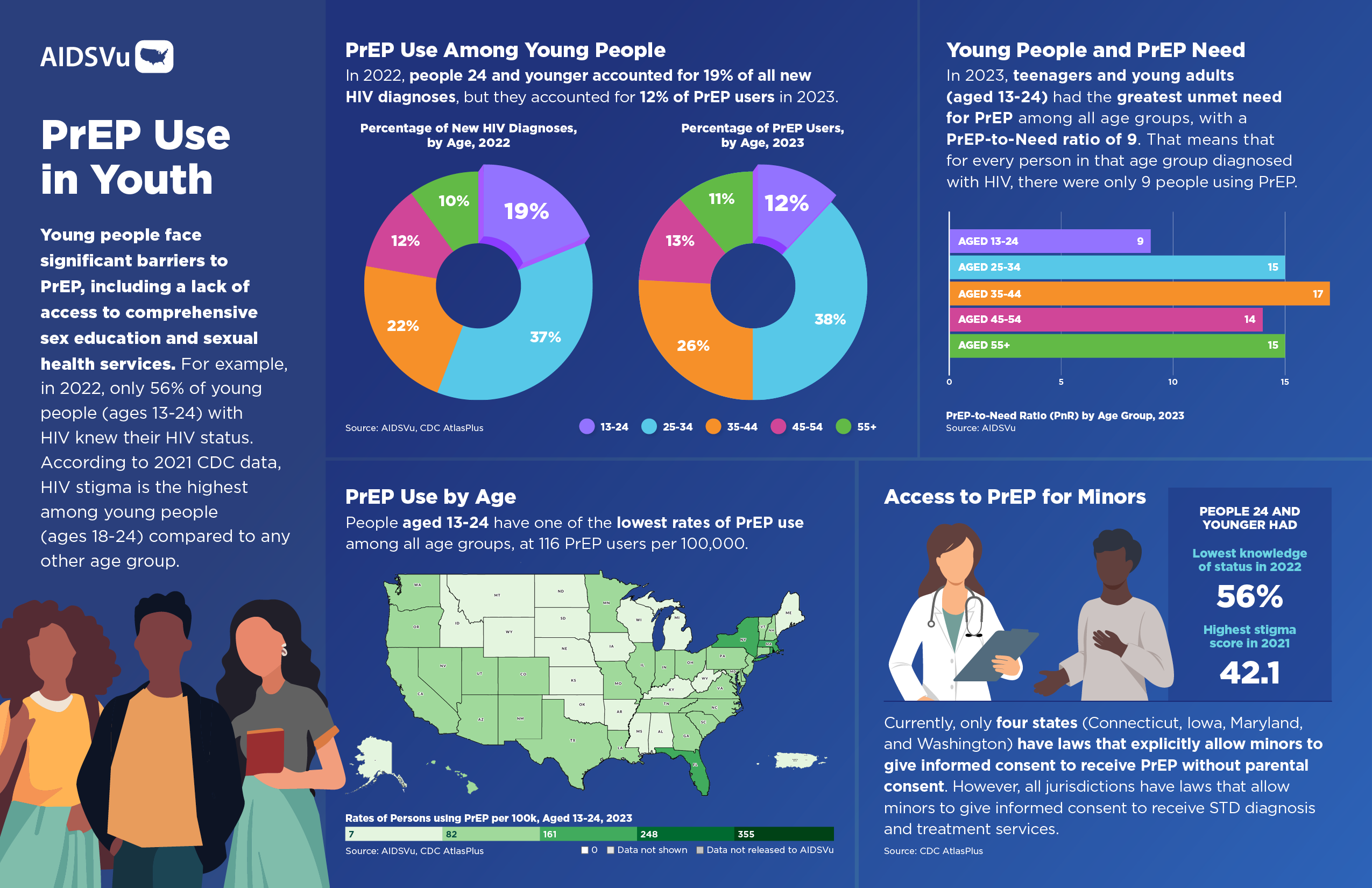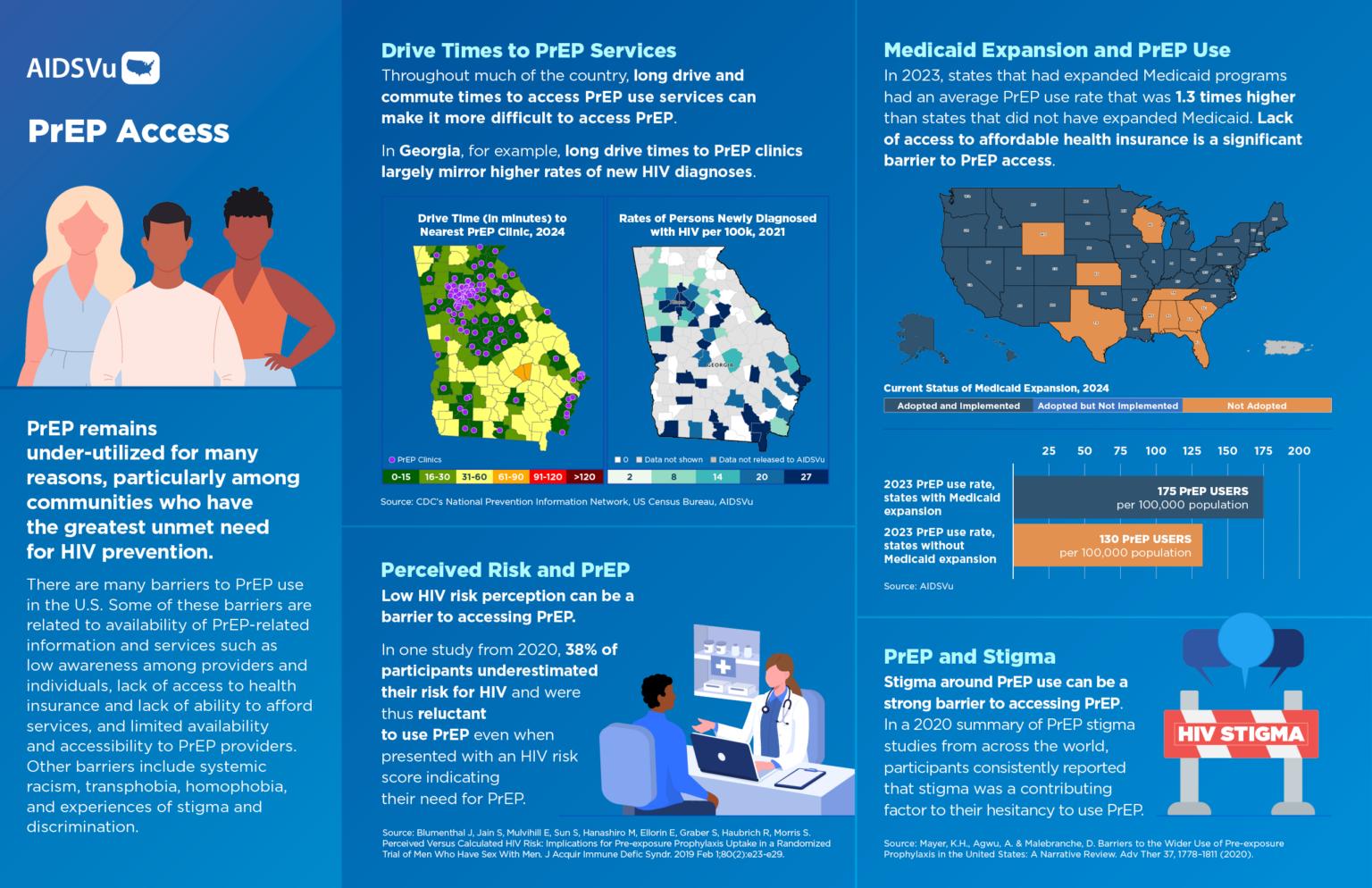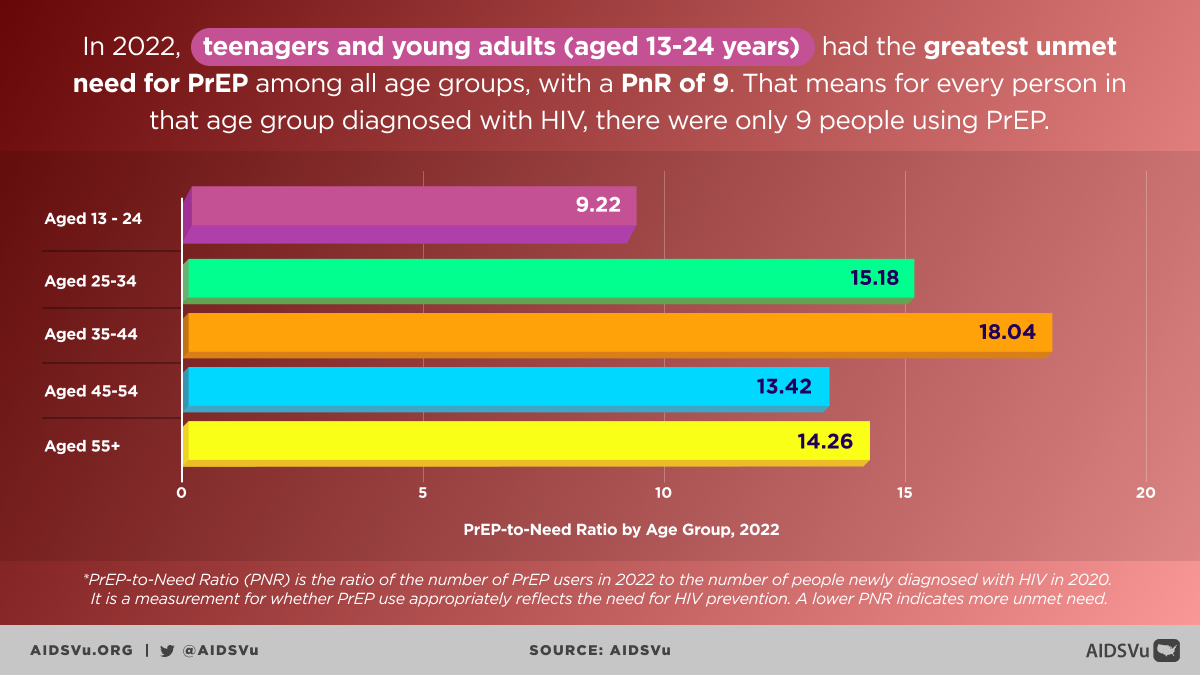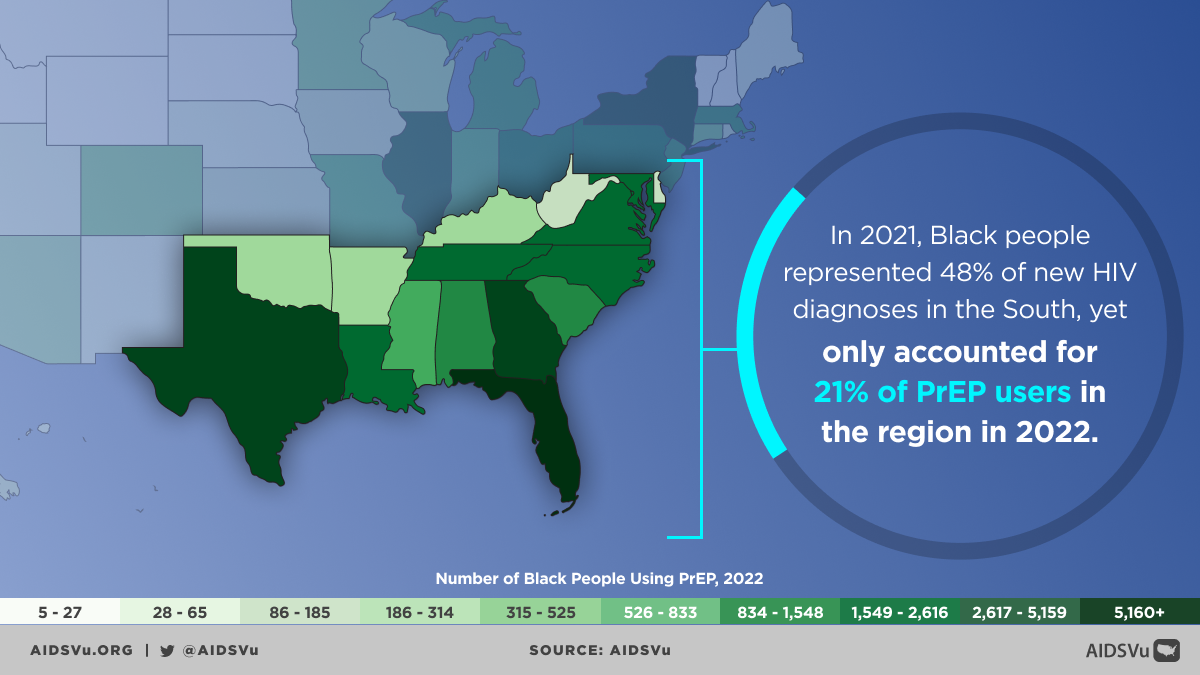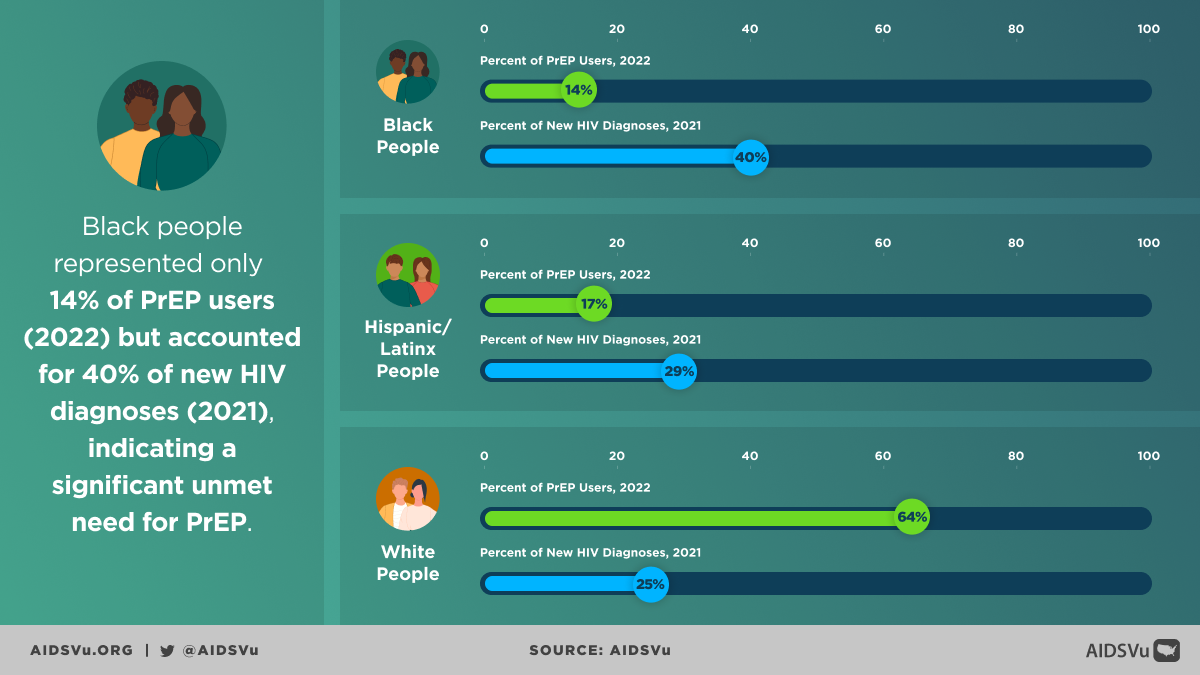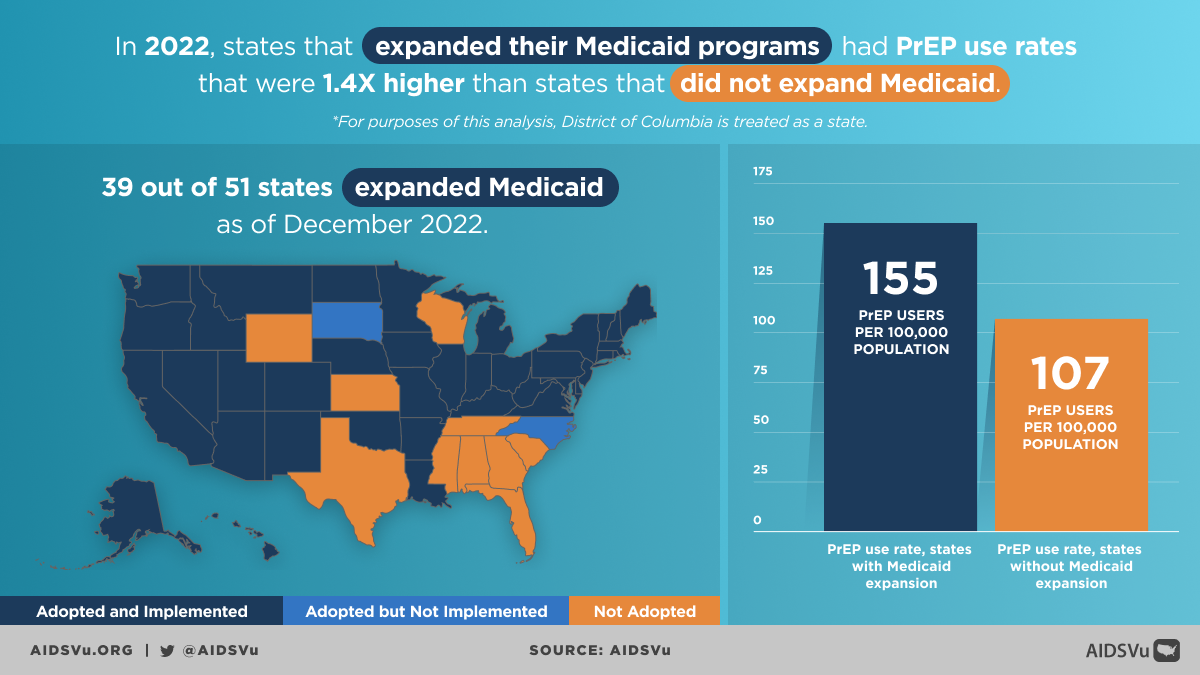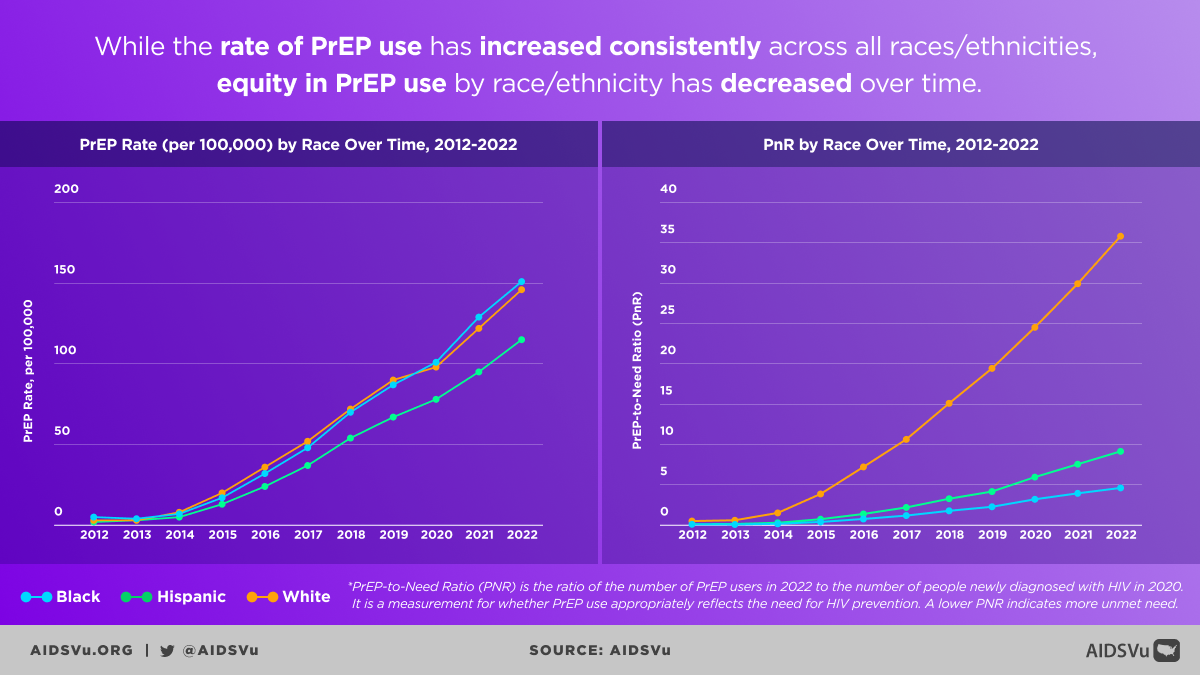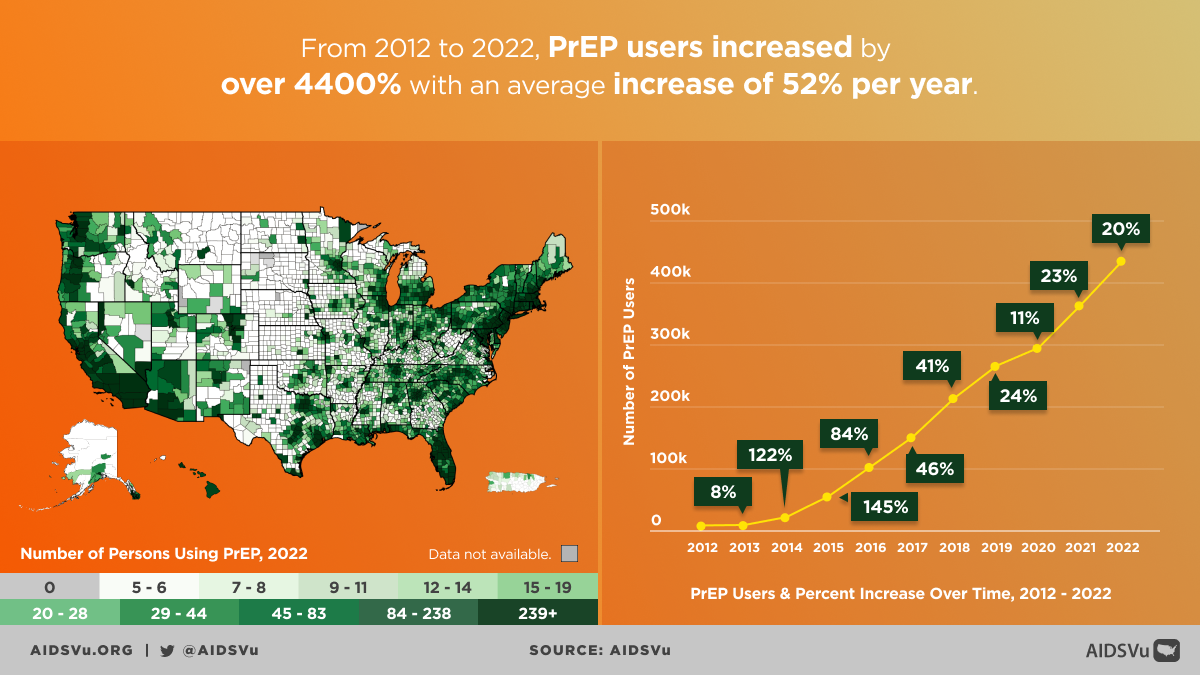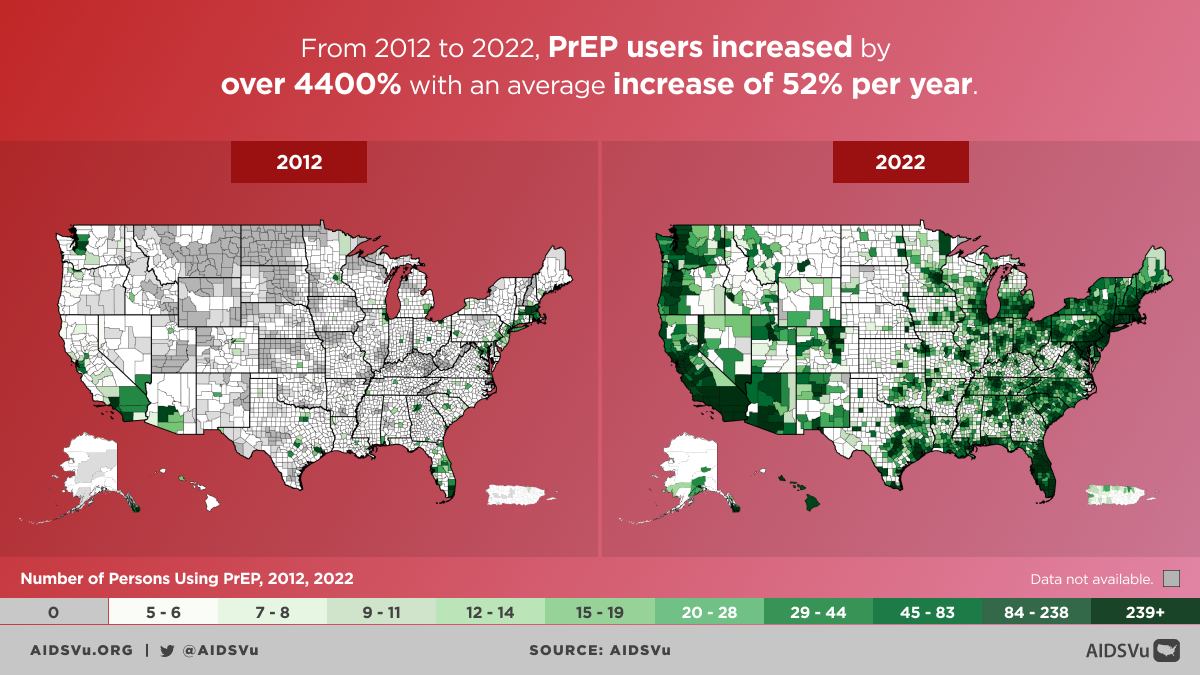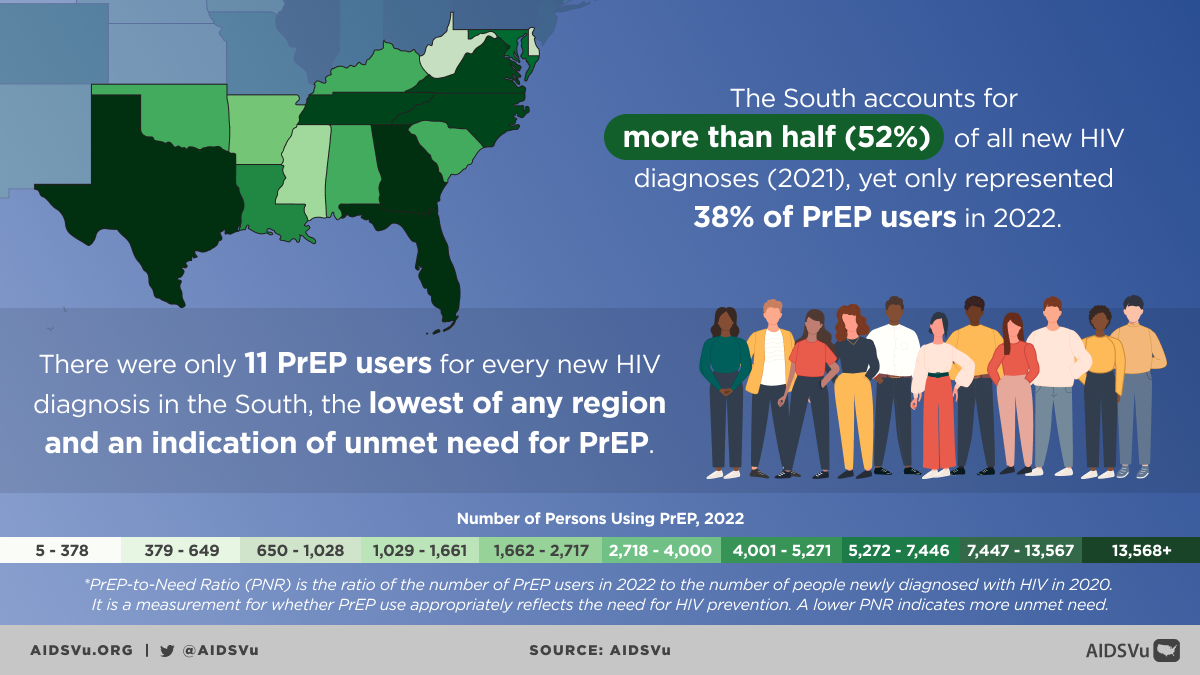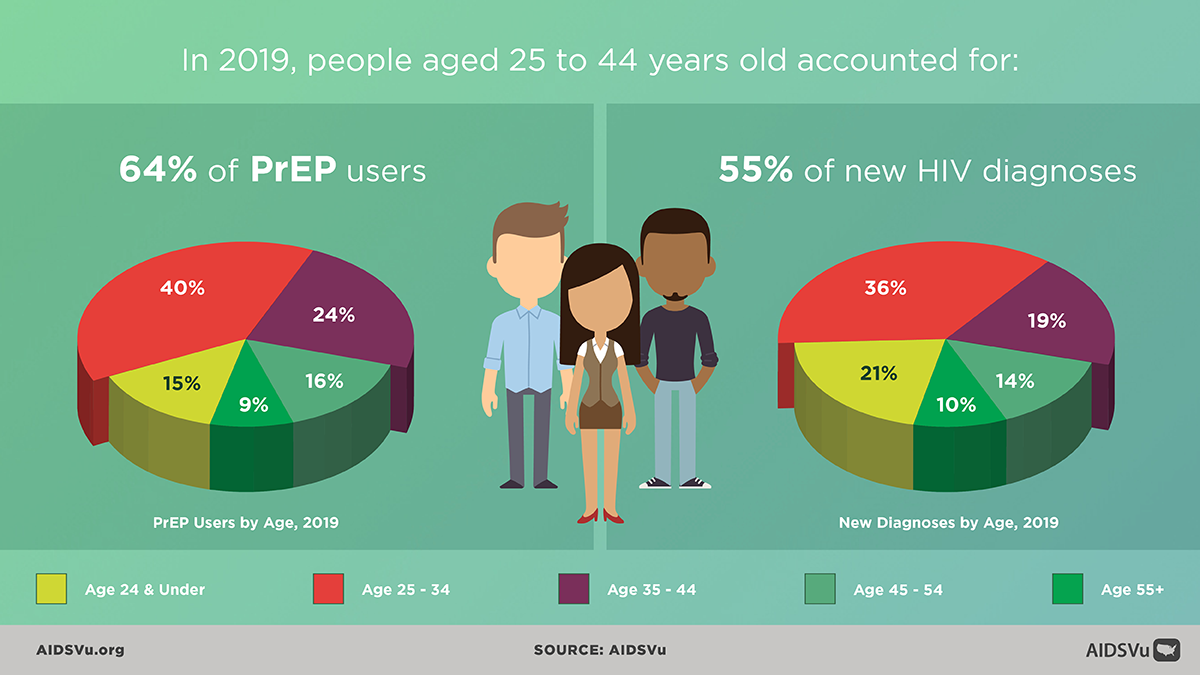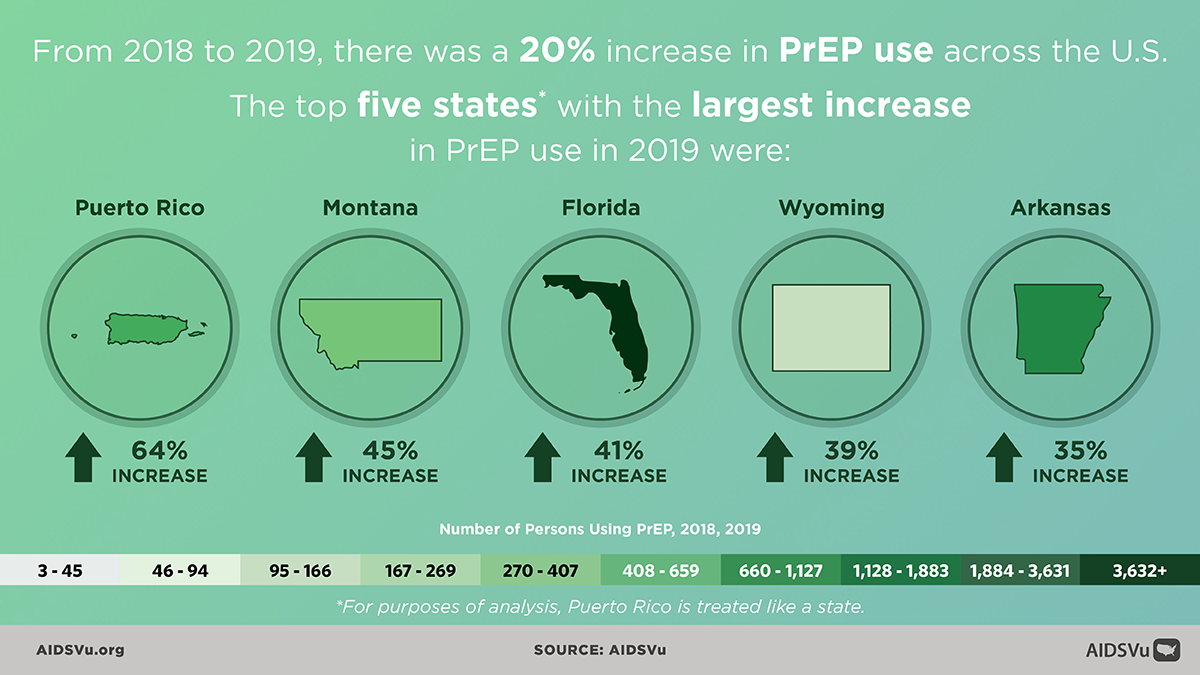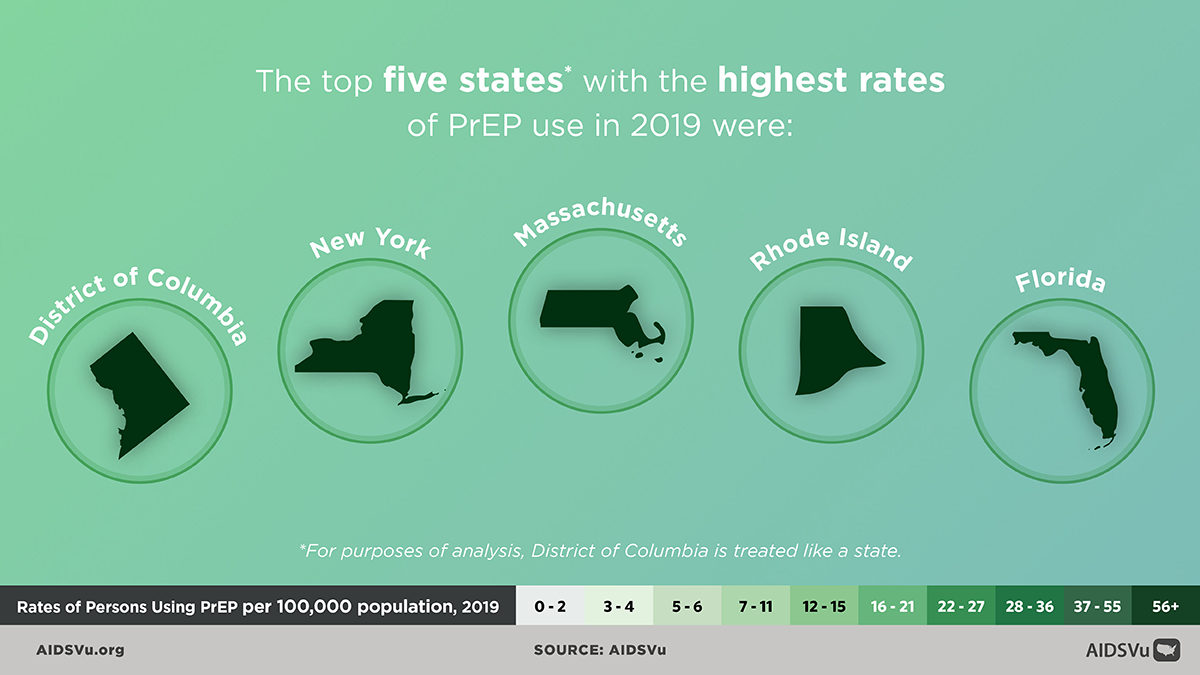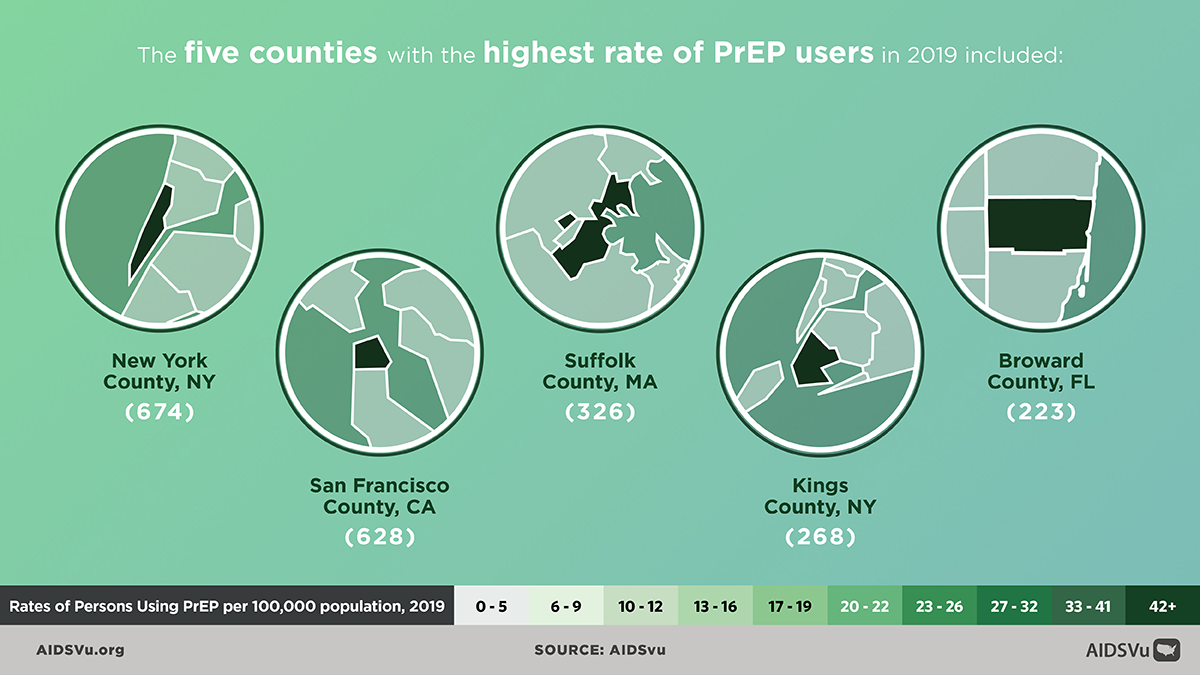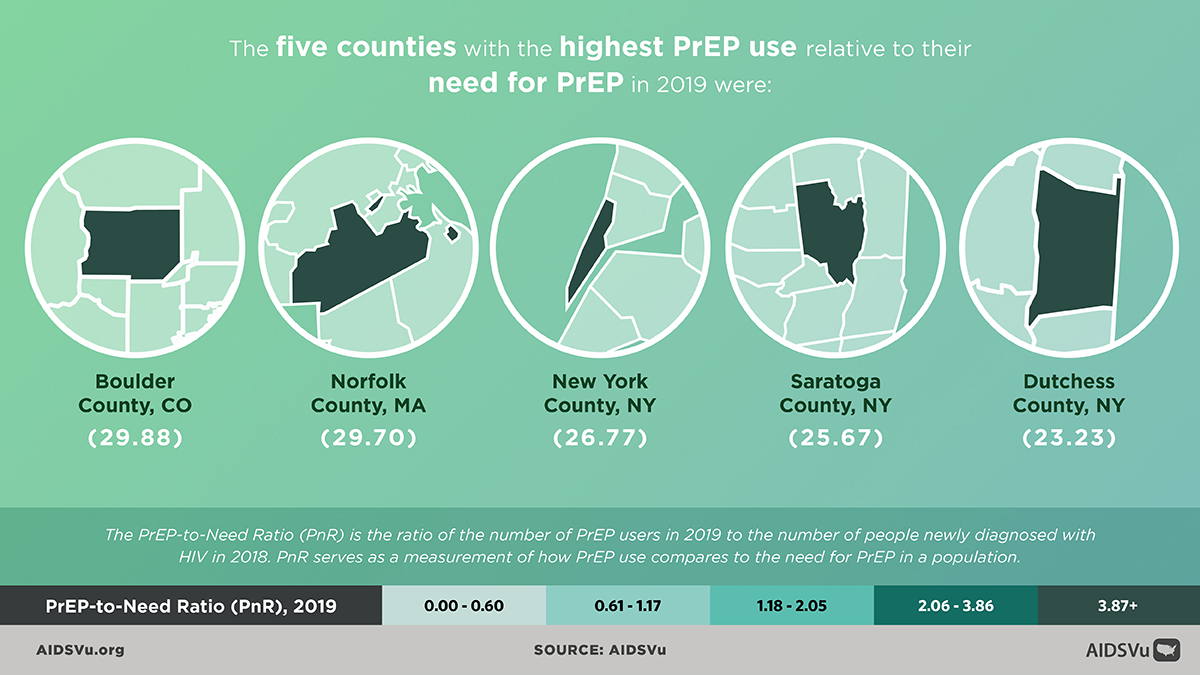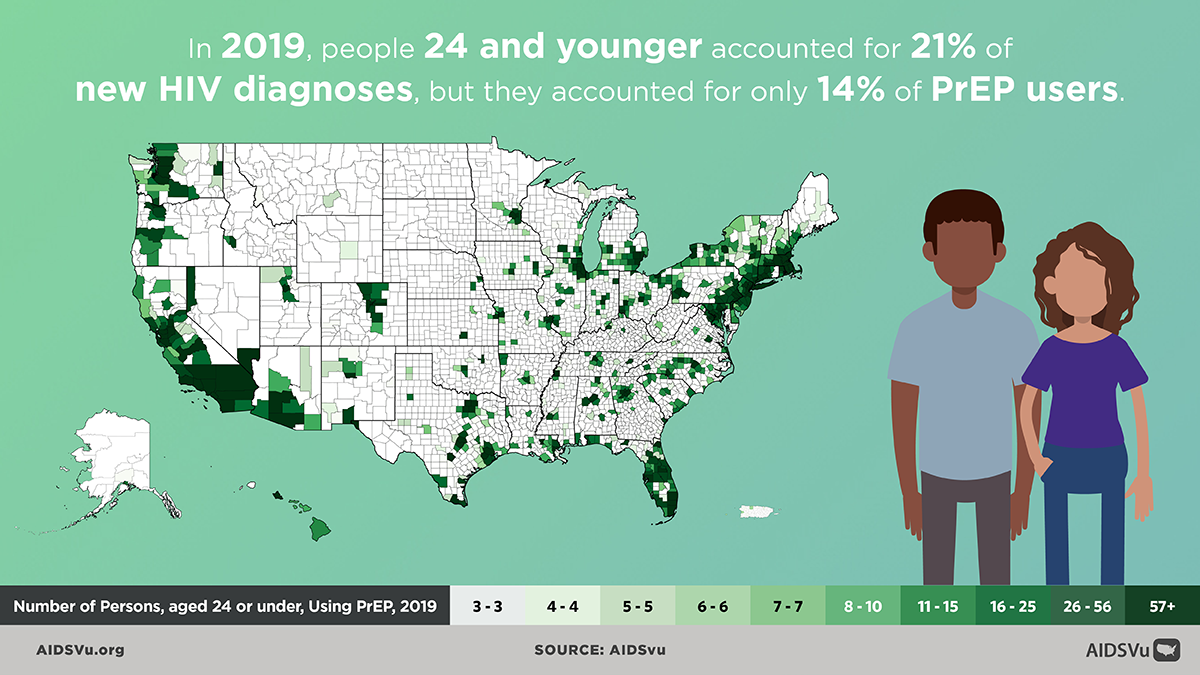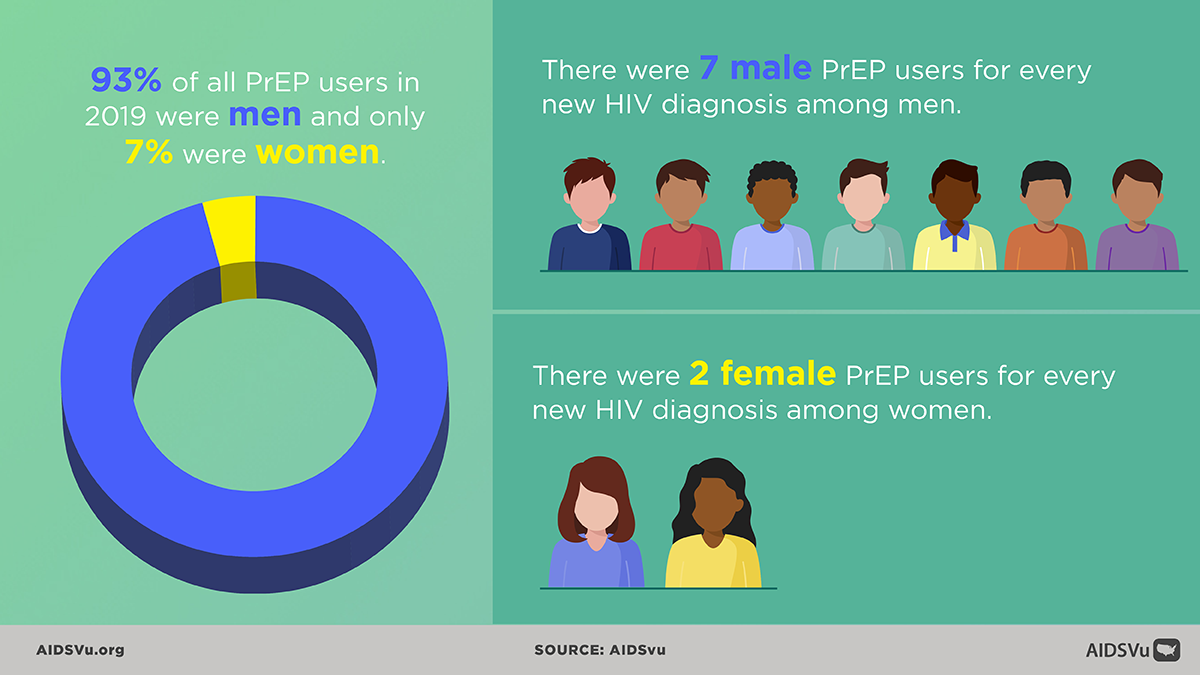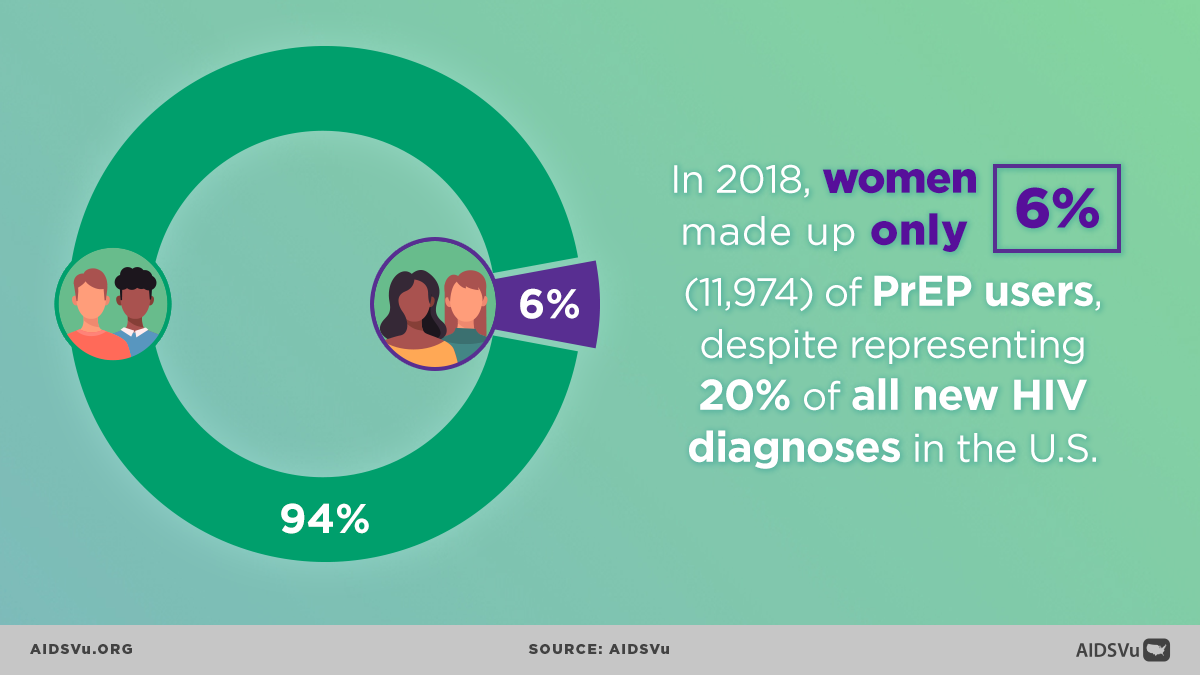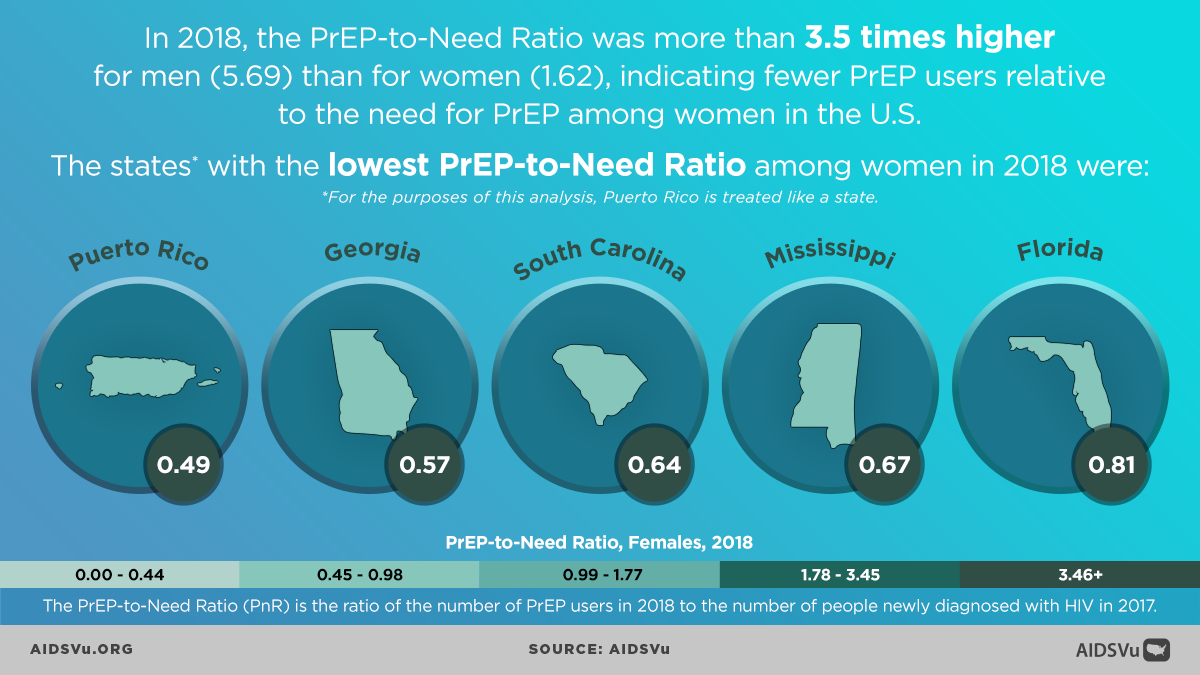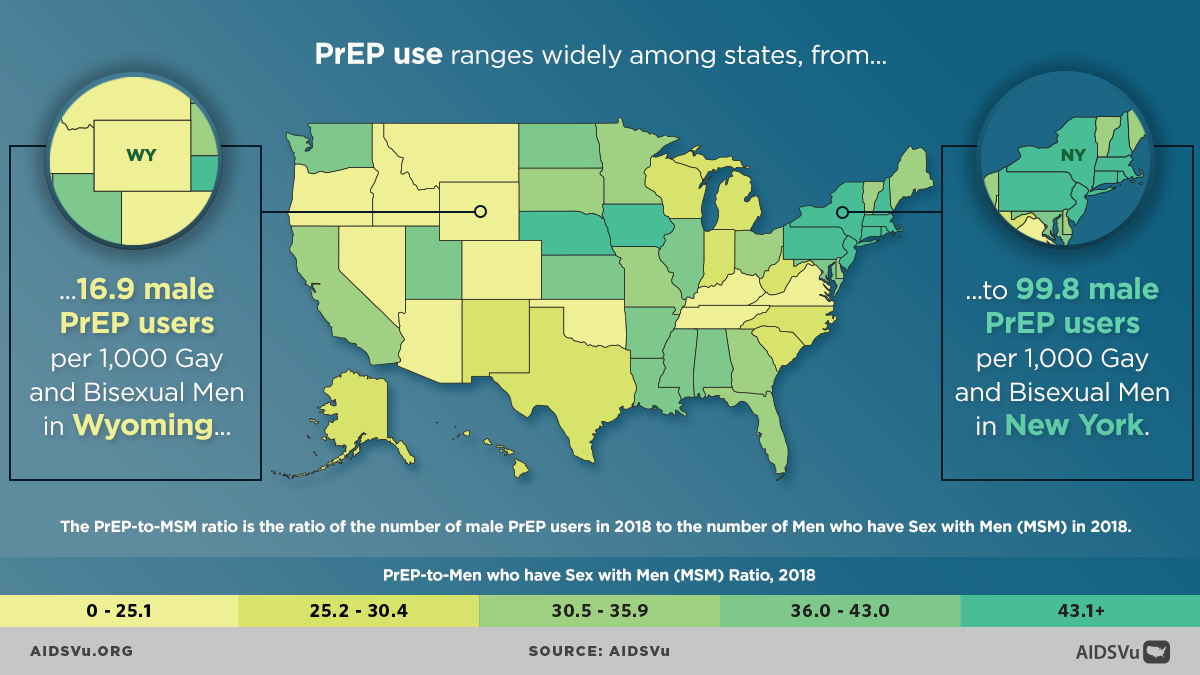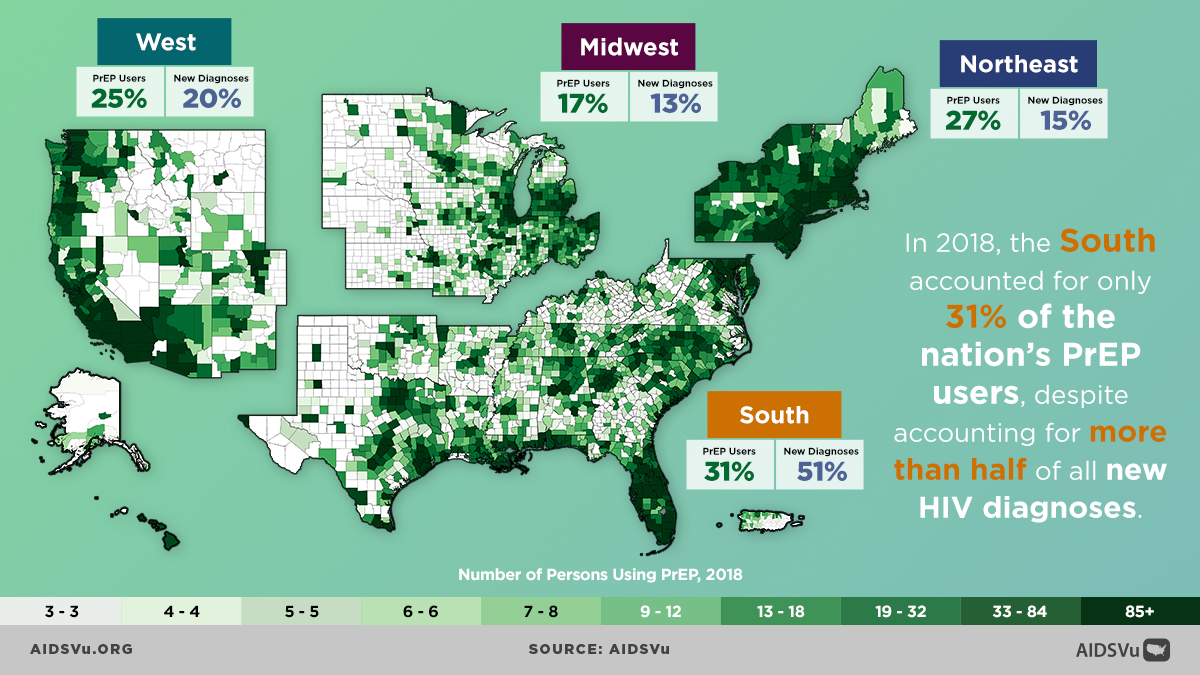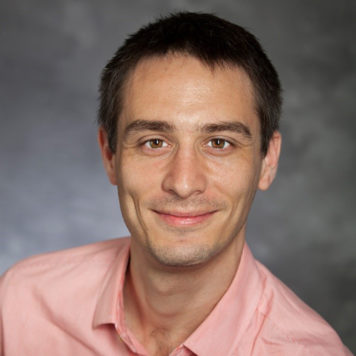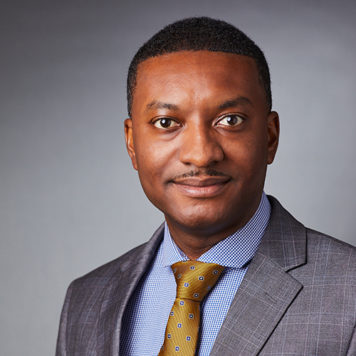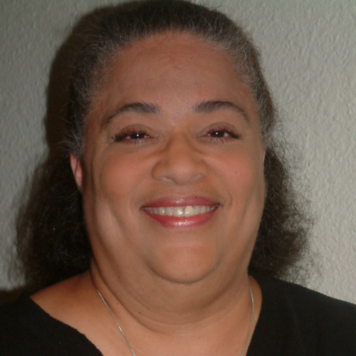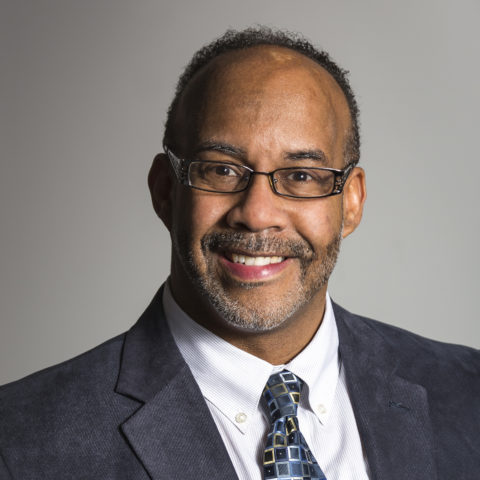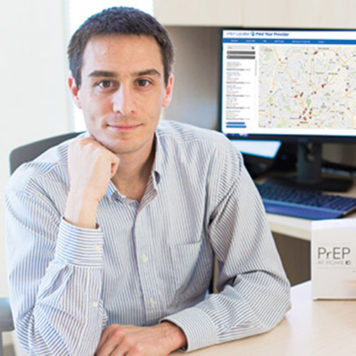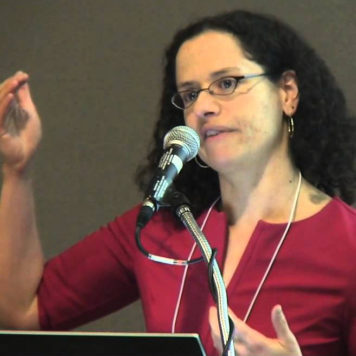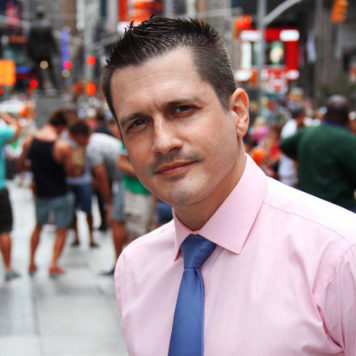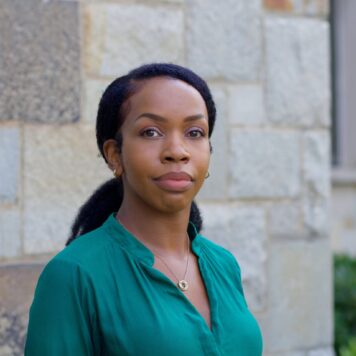The PrEP utilization data on AIDSVu reveal continued increases in persons using PrEP across the U.S., including a 17% increase from 2023 to 2024. While these data point to significant growth in PrEP use nationwide, they also highlight important disparities in PrEP use across different sexes, races/ethnicities, age groups, geographic locations, socioeconomic statuses, and levels of access to care. In the United States, 37,966 people were diagnosed with HIV in 2022, underscoring the need to continue expanding the use of PrEP and other comprehensive HIV prevention strategies.
AIDSVu’s PrEP data, which provide a reliable and consistent metric for PrEP users in counties and states across the U.S. by year from 2012 to 2024, can be stratified by age and sex. State-level maps can additionally be stratified by race/ethnicity for Hispanic, Black, and white individuals. These data and maps offer important, comparative information and tools to public health officials, policymakers, and researchers and to inform efforts to increase PrEP awareness and access where it is needed most. Please see the Data Methods page for additional information on the data set and its limitations.
What is Pre-exposure prophylaxis (PrEP)?
- Pre = before
- Exposure = coming into contact with HIV
- Prophylaxis = treatment to prevent an infection from happening
The PrEP-to-Need Ratio, Explained
Using the PrEP Data
Public Health Officials & Policy Makers
Understand local PrEP use and disparities in use to help inform data-driven policies and programs to increase awareness of and access to PrEP.
Researchers
Identify trends and gaps in PrEP access, outline facilitators and barriers to PrEP expansion, and determine areas for further exploration.
Utilize data and maps to assist with planning processes, resource allocation, presentations, grant writing and review.
Community
Raise awareness of PrEP use in your community and the need to expand the use of PrEP among those at high risk of getting HIV.
Educate your elected officials and encourage policy change to increase PrEP awareness and access.
What These Data Tell Us
What do the PrEP use data reveal?
(PrEP use data is from 2024, and new HIV diagnoses data is from 2022, unless otherwise noted.)
Overall PrEP Use:
- The number of PrEP users in the U.S. increased by 17% from 2023 to 2024, continuing a trend of consistent growth in PrEP use since 2012.
- Nationally, there are 16 PrEP users for every new HIV diagnosis.
- The South accounted for 53% of HIV diagnoses but only accounted for 39% of PrEP users. The South has the greatest unmet need for PrEP of all regions.
PrEP Use by Race/Ethnicity:
- Black people represented 38% of all new HIV diagnoses, but only accounted for 15% of PrEP users.
- Hispanic/Latinx people represented 32% of all new HIV diagnoses, but only accounted for 18% of PrEP users.
- White people represented 24% of all new HIV diagnoses but accounted for 63% of PrEP users.
- There is a greater unmet need for PrEP in Black and Hispanic/Latinx communities than White communities in all regions of the U.S.
- Regionally, Black people represented 48% of new HIV diagnoses in the South in 2022, but only 23% of PrEP users in the South in 2024; in the Midwest, Black people represented 42% of new HIV diagnoses in 2022, but only 13% of PrEP users in 2024.
- In the South, there were 29 white PrEP users for every new HIV diagnosis among white people. In comparison, there were only 6 Black PrEP users for every new HIV diagnosis among Black people.
- In the West, Hispanic/Latinx people represented 50% of new HIV diagnoses but only represented 24% of all PrEP users.
PrEP Use by Age:
- 65% of all PrEP users in 2024 were between ages 25 and 44 years old.
- Teenagers and young adults (aged 13-24 years) had the greatest unmet need for PrEP among all age groups, with a PrEP-to-Need Ratio (PnR) of 10. That means that for every person in that age group diagnosed with HIV, there were only 10 people using PrEP. People aged 35 to 44 and those aged 65+ had the highest PnR (with both age groups having a PnR of 19).
PrEP Use by Sex:
- Among all PrEP users in the U.S., 91% were male and only 9% were female, despite the fact that women comprised 19% of new HIV diagnoses.
PrEP Use and Medicaid Expansion:
- In 2024, states that had expanded Medicaid had an average PrEP use rate that was 1.3 times higher compared with states that had not expanded Medicaid.
- In 2024, states that had expanded Medicaid had an average PrEP-to-Need Ratio (PnR) that was more than twice as high compared to states that had not expanded Medicaid.
-
- Note: 41 of the 50 US states + DC had adopted and implemented Medicaid expansion as of December 2024. (Puerto Rico not included.)
*Note: The PrEP-to-Need Ratio (PnR)—the ratio of the number of PrEP users to the number of people newly diagnosed with HIV—serves as a measurement for whether PrEP use appropriately reflects the need for HIV prevention in a geographic region or demographic subgroup. A lower PnR indicates more unmet need for PrEP.
PrEP Services
Use AIDSVu’s PrEP Locator, a national directory of providers of PrEP in the U.S., to find PrEP services near you.
Find Locations
PrEP Maps
Explore AIDSVu’s PrEP maps to see state- and county-level PrEP utilization from 2012 to 2022 and other HIV data such as new diagnoses, prevalence, and mortality.
See the Data
Beyond the Map
AIDSVu offers tools and resources beyond the HIV map that provide users with a deeper understanding of the HIV epidemic, its socioeconomic driving factors, and services available at the community level.
Find Services
Use the testing, Pre-Exposure Prophylaxis (PrEP), and care services locators to find critical HIV/AIDS services near you.
Learn MoreLocal Data
View city and state profiles with local HIV/AIDS statistics, national comparison charts, and local resources.
Learn MoreFor More Information
Learn more about PrEP with the following resources.







